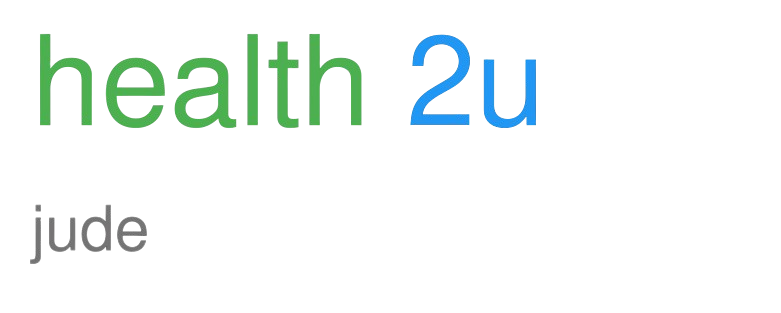[ad_1]
Everyone needs a team.
As a health coach, you can become an expert in many areas: nutrition, psychology of behavior change, fitness and athletic performance, stress management and recovery, and more.
However, no matter how many certifications you acquire, you will encounter clients with growth-blocking problems that you don’t have the skills, training, knowledge, or legal right to solve.
Here’s the thing…
Hey you You may not be an expert in fixing a marriage, treating GERD, or counseling someone with an eating disorder, but someone else is.
This is where a healthy referral network comes in.
By connecting your client with such a person, you can stay in your practice, welcome business to respected colleagues, And Help your customer solve their problem.
(Total. Supercock. Move.)
All of our certification programs include classes dedicated to teaching coaches how to build strong referral networks that specialize in solving common customer problems.
In this article we will talk about how to do it: by examining the above Errors We see coaches do it. Remove them and you can definitely mention it.
First, what is a referral network?
A referral network is a directory of additional professionals, businesses and resources that can benefit clients.
Your network may include local or virtual:
- Medical doctors, psychologists, registered dietitians, and other professionals with the training and certifications to help clients with problems outside of your experience. (For an in-depth refresher, see our scope of practice worksheet.)
- Fellow health coaches and personal trainers with in-depth knowledge in an area outside your expertise. (For example, a client may be interested in learning yoga, but you don’t have the faintest idea how to do sun salutations.)
- Workshops, fitness groups, webinars, catering and other resources to support clients on their behavior change journey.
You want to do some legal work to confidently refer clients to talented professionals with good reputations. This brings us to the top mistakes to avoid.
Mistake #1: You build your network. before Starting your business.
According to Kate Solovieva, PN’s director of community engagement, the act of “creating a referral network” can double as a retention tool for recently certified health coaches.
Instead of taking on clients, these trainers are looking for more and more professionals, valiantly striving to be prepared for every referral situation. However, even if they continue to work on it, their list is never “complete”.
because of…
“We can’t be ready for everything,” Solovyeva said.
The solution
Take customers as soon as they are confirmed.
Yes! That may sound scary, but the best way to figure out your “gaps” is to start your practice and see where your clients need more help than you’re providing.
Add people to your referral network when you:
- Connect with professionals on LinkedIn and other virtual networks
- Lean into peer networks (like the Precision Nutrition Facebook community).
- Join your local Chamber of Commerce members
- Discuss your favorite professionals and resources with family, friends and clients
- Attend health meetings and other local events where various health professionals gather
- Find (and test!) providers based on your own health needs.
Who is in your referral network?
Use the following property list as inspiration.
| Source | Name | website | Contact information |
| Acupuncture | |||
| Chiropractor | |||
| Cooking room | |||
| Cycling, hiking, walking or running club | |||
| Exercise Physiologist | |||
| A trainer who specializes in plant-based diets/prenatal or postnatal fitness/training areas you don’t cover elsewhere | |||
| Marriage / Family Counselor | |||
| Massage therapist | |||
| Catering service | |||
| Mental health professional | |||
| Orthopedist | |||
| Pelvic floor therapist | |||
| Primary care physician | |||
| Physiotherapy specialist | |||
| Registered Dietitian | |||
| Stress Management Unit | |||
| other |
Mistake #2: You think your referral list is covered all of them Customer needs.
As we mentioned above, you can’t anticipate every referral or customer request – and that’s okay.
This is especially true if you train with clients around the world.
(You may know three great massage therapists where you live in Toronto, Canada, but that knowledge won’t help if your client is in Wellington, New Zealand.)
Similarly, some professionals or resources may work for some clients, but not others.
(For example, you may know of many catering options, but none of them are suitable for that plant-based client on a gluten-free diet.)
The solution
Learn how to help clients find the professionals and resources they need.
You can do this:
- Ask customers to express their preferences. (Do you prefer working with a certain gender? Do you want to meet in person or online? Do you like the enthusiasm and creativity of a new professional, or the “I’ve seen it all” wisdom of a more experienced professional?)
- Offer a coaching session to jointly search for potential professionals and services online.
- Encourage customers to talk to three experts, ask questions, and use what they learned to choose a winner.
Mistake #3: You let social awkwardness get in the way of networking opportunities.
Dating a stranger takes some bravery. You have to put yourself out there, explain who you are and what your goals are, and you may be ignored or denied.
This is where many coaches get stuck, according to Tony Bauer, PN’s Director of Coaching and Educational Operations.
Many coaches may leave the conversation because of this.
The solution
Turn networking into a challenge. Coach Solovyeva called it “Operation 100”.
- Set a goal to contact 100 professionals in 12 months.
- Work toward your goal for 20 minutes each week.
- Follow up once or twice with each non-responder.
- Instead of expecting a “yes” from everyone you approach, understand that only about 10 percent of people will get back to you.
To ease yourself into the challenge, set your elevator pitch, suggests Baier.
Don’t overthink this. Your pitch doesn’t have to be a multi-page persuasive essay. It should also not contain magical talking points. Just be yourself.
The elevator pitch: How to introduce yourself to a potential referral
As you work on your elevator pitch, use the examples below for inspiration.
“I am a health coach who works with corporate executives. However, some of my clients would benefit from someone with your expertise. I would like to recommend you to my clients when those needs arise. Would you be open to that?”
or:
“I am a health coach who works with athletes. Occasionally, my clients need guidance that I can’t always provide. I appreciate the work you do, and I would love to refer people to you. If you’re up for it, can we have a quick 15 or 20 minute meeting to discuss what this arrangement looks like?”
Or simply:
“I’m a health coach and I’m building referrals for practitioners. I would love to refer clients to you. Are you taking new patients now? ”
Mistake #4: You use outdated persuasion tactics.
If you use LinkedIn, you may be adopting old-school cold sales tactics. We’re talking direct messages from strangers who haven’t read anything directly on your profile and don’t know anything about you.
These spam messages are as welcome as a stranger who props you up at a bar and says, “So, you want to come back to my place?”
We’re not here to discourage you from using cold data. It has a place. However, to increase your response rate, we’d like to introduce you to a rarely used technique.
The solution
Get to know people before asking onlineCoach Solovyeva pointed out.
Follow them, read their content, download and use their free resources, comment on their posts, congratulate them on their career wins, and be a part of their online lives.
do that, People will remember you. Many of them will respond to your messages. Plus, the intel you gather by making connections can help you avoid…
Mistake #5: You don’t personally check references.
How do you ensure you’re delivering clients to compassionate professionals who know exactly what they’re doing?
It involves more than checking someone’s website or social media profile.
If you just look at someone’s website or social media posts, “you’re gauging their confidence and their writing skills,” Solovieva says. “If we’re lucky, confidence and copywriting skills go hand in hand, but not always.”
The solution
Try their services. Take someone’s yoga or Zumba class. Book a massage. Ask a medical professional to look at the knee.
This way, you can see the expert in action.
If you’re thinking, ‘I don’t need some of the services my clients want!’ You have two options:
- Offer to pay a professional for 30 to 60 minutes to ask some questions, understand their medical philosophy, and discuss referring clients to them.
- Connect with people on local social networks like NextDoor.com. Ask team members if they have seen a professional and, if so, whether they would recommend the person.
Mistake #6: You oversell clients on your referrals.
It’s only natural that your client wants to take action when you recommend a professional that you’ve personally vetted.
But, no matter how hard you work, some clients won’t make an appointment with that professional—and that’s okay.
“Let your clients be adults,” coach Bauer says.
Customers have their reasons. Maybe their insurance doesn’t cover the service in question. Or, maybe you’ve decided to see someone else.
“It’s not your responsibility to make relationships perfect or thrive,” says Bauer.
Support cycle
Some coaches fear referrals because they see them as “giving away business.”
But the truth is, when you refer clients to strong professionals, your clients feel like they have your back. (That is They do They are more likely to refer friends and family. Hey you.)
Also, when you refer to another respected colleague’s business, it does the same Hey you For reference on their radar.
It’s good for your customers, it’s good for business, and it’s good for health professionals in your community in general.
If you are a coach or want to be…
You can help people build. Persistent Diet and lifestyle habits that dramatically improve their physical and mental health – while making a good living doing what they love. We’ll show you how.
If you want to know more, take a look PN Level 1 Nutrition Training Certification.
[ad_2]
Source link





